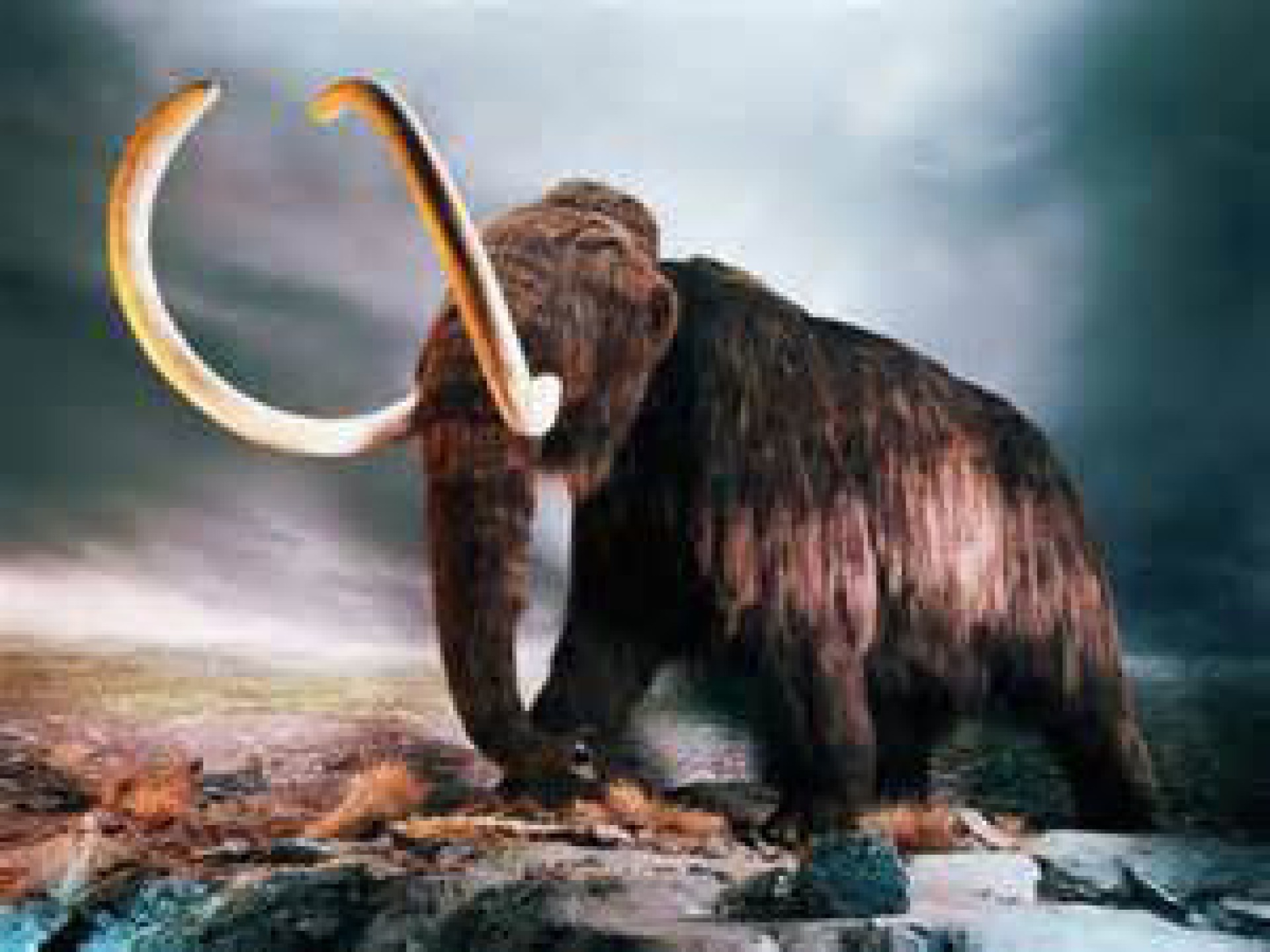Woolly Mammoths in Mahaska County!
Contributed by Laura DeCook, Naturalist, Mahaska County Conservation Board
Rural Mahaska County, Iowa is the location of an ice age-old story that is beginning to unfold. The story began in 2010 on the day a landowner discovered of a very large femur (upper leg bone) in the bank of a stream. With confirmation of the bone belonging to a large animal that lived during the last ice age, the story has drawn interest from a wide variety of people across the United States. Some of these people have backgrounds in geology, archeology, and biology and others are simply local residents eager to learn more about this unique animal. Local and national media have also shared this story. The animal that has created the buzz and that is teaching us about this history of our earth is the woolly mammoth. The scientific name for the woolly mammoth is Mammuthus primigenius (the genus is always capitalized and the species is not). Woolly mammoth has been dated to the Late Pleistocene time period!
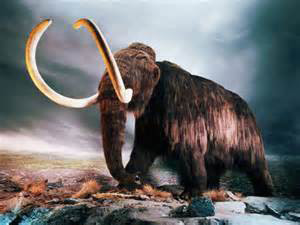
What is a Woolly Mammoth?
The Late Pleistocene Epoch (2.6 million to 10,000 years ago) was a time period of enormous animals like woolly mammoths, giant sloths and saber-toothed tigers. Where Mahaska County is located today, the landscape would have been a patchwork of Boreal forest (fir, spruce and larch trees), grassland, streams, and rivers. Seasonal temperatures were colder than they are now, with winters lasting longer.
Woolly mammoths were large, hairy, elephant-looking animals weighing 6-8 tons and standing 10-12 feet at the shoulder. They must have been an impressive sight as they lumbered along searching for food in the snow. Most likely their tusks that grew up to 15-feet long were used as giant shovels to clear the snow from the ground to expose vegetation. They ate grasses that they pulled out of the ground, leaves pulled off trees, and bushes with their elephant-like trunks. They chewed their food with four giant molars in their mouths. These mammoths were covered with four inches of fat, as well as two layers of fur to keep them insulated and warm. The outer layer of fur grew to be nearly three feet long and ranged in color from blonde to dark brown. The undercoat was a soft “wool” texture.
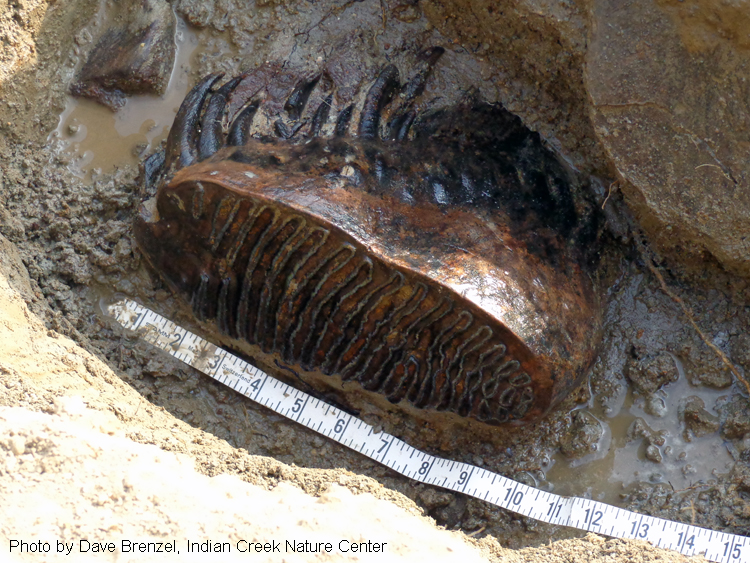
So far, three woolly mammoths have been found at the Mahaska County site. This has been confirmed by Chris Widga, Assistant Curator of Geology and mammoth expert at the Illinois State Museum in Springfield, Illinois. Mr. Widga was able to distinguish the species of mammoth by looking at the teeth found at the dig site.
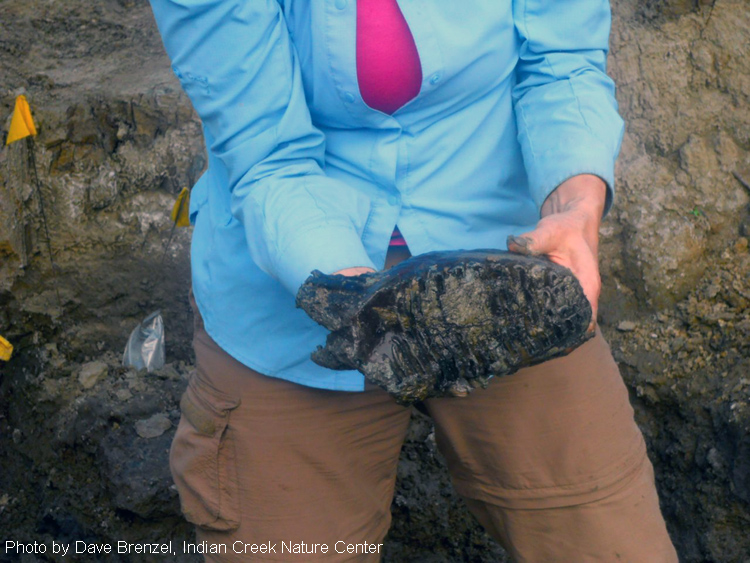
What are we learning from digging up mammoth bones?

Finding woolly mammoth bones are the icing on the cake for the people involved at the dig site. The “cake” is learning what Mahaska County would have looked like over 10,000 years ago. Looking at the layers of clay, sand, silt, large rocks, and water seeping from the ground, geologists can see where a glacial spring had likely erupted from the ground. The spring would have drawn mammoths and other animals to the area to drink water. Soil tests from these layers show evidence of fir, spruce, and larch trees. These trees are found in a boreal forest -- a boreal forest in Iowa? All of this information has fascinated diggers at the site.
There are many questions still unanswered. How did the mammoths die? Is there evidence of more plants and animals yet to be discovered? Did humans live in this area?
In order to find answers, volunteers and scientists will continue digging.
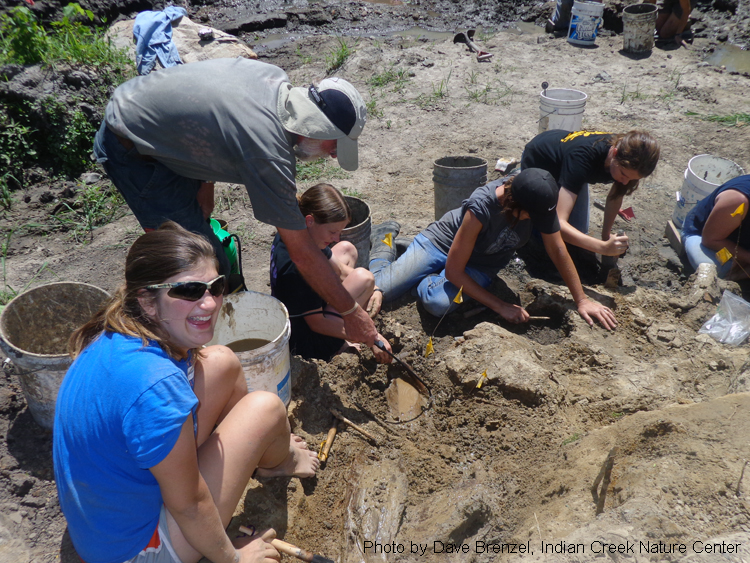
- Mammoth Dig: Volunteers help with excavation - WHO-TV Channel 13 video
If you have questions about the woolly mammoths found in Mahaska County, contact Laura DeCook, Naturalist for the Mahaska County Conservation Board at [email protected] or (641)673-9327.
published Sunday, November 1, 2020

